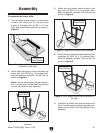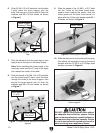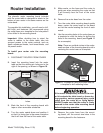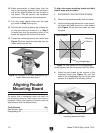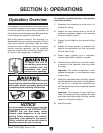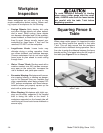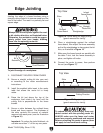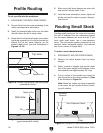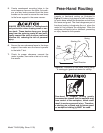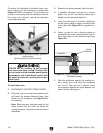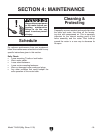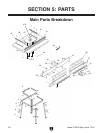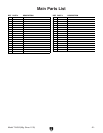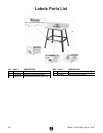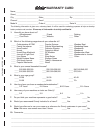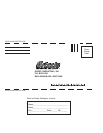
Model T10432 (Mfg. Since 11/10)
-17-
5. Create countersunk mounting holes in the
zero-clearance fence so the bolts, flat wash-
ers, and star knobs removed from the fence
boards can be used to secure the new fence
to the fence support in the same manner.
ALWAYS use hold-downs or featherboards
and push sticks when shaping small or nar-
row stock. These devices keep your hands
away from the spinning router bit and suffi-
ciently support the stock to allow a safe and
effective cut, reducing the risk of personal
injury.
6. Secure the zero-clearance fence to the fence
support, then make sure the fence is parallel
to the table T-slot.
7. Check for proper clearance, connect the
router to power, then make a test cut to verify
the results.
Free-Hand Routing
Irregular or free-hand routing, as illustrated in
Figure 21, takes a high degree of skill and dexter-
ity and is done without the protection and aid from
the fence and guard. The most dangerous part of
free-hand routing is beginning the cut, when the
router bit first contacts the workpiece. Often the
workpiece will tend to jerk or kickback, presenting
an injury hazard to the operator.
Free-hand or irregular routing greatly
increases the chance that the operator may
lose control of the workpiece, which could
result in serious personal injury. Therefore,
a starting pin or block and a custom guard
or workpiece holding jig MUST be used.
Workpiece
Feed Direction
Swing
Starting Pin
Rub
Collar
R
o
t
a
t
i
o
n
Figure 21. Illustration of free-hand routing using
a starting pin (guard not shown for clarity).



